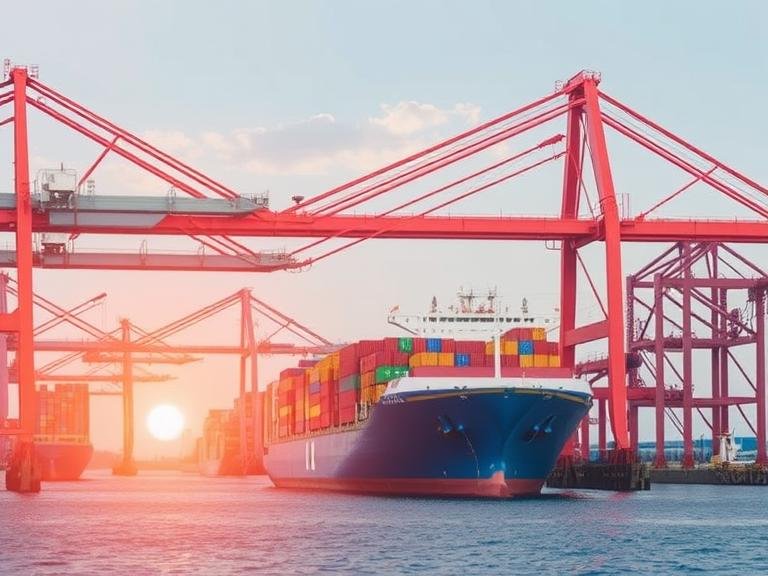Businesses are constantly pressured to streamline operations and enhance efficiency in the dynamic international logistics landscape. One increasingly popular method for achieving this is LCL ocean shipping, a solution for companies seeking to move less-than-container-load quantities of goods. This approach has gained significant traction, especially as global trade patterns shift and companies seek adaptive, cost-effective supply chain strategies.
LCL shipping allows businesses to move cargo efficiently without waiting to amass enough volume to fill a whole container. As retailers, importers, and manufacturers face evolving market demands and inventory challenges, LCL has emerged as a versatile option. The method ensures goods move consistently, enabling companies to maintain a steady supply chain regardless of fluctuating order sizes.
Understanding LCL Shipping
LCL (Less than Container Load) shipping involves grouping cargo from multiple shippers into a single ocean freight container. Coordinated by freight forwarders, this shipping method maximizes the use of space and minimizes cost for businesses unable to fill an entire container. LCL is ideal for international shipments that are too large for air freight but do not require the space of a full shipping container. By consolidating goods, businesses pay only for the space they use, making it a more affordable and flexible option for many supply chains.
Benefits of LCL Shipping
- Cost Efficiency: LCL allows shippers to avoid the high cost of paying for unused container space, resulting in more affordable shipments for smaller loads.
- Flexibility: The ability to ship on demand—without waiting for enough stock to fill a container—empowers businesses to respond more rapidly to sales trends and customer needs.
- Reduced Inventory Holding: Smaller, frequent shipments facilitate lean inventory models, lowering warehousing costs and enabling just-in-time delivery approaches.
When to Opt for LCL
LCL shipping is perfectly suited for scenarios such as:
- Small or Irregular Shipments: Sharing space is significantly more cost-effective when order volumes do not fill a full container.
- Budget Constraints: LCL reduces capital outlay tied to logistics for companies looking to minimize upfront shipping expenses.
- Limited Warehouse Space: Businesses with restricted storage capacity benefit from frequent, smaller deliveries that keep inventory flowing smoothly.
Key Considerations for LCL
Before committing to LCL shipping, it is important to weigh key factors that might affect cost, timing, and the safety of your goods. Because each shipment is combined with others, LCL often involves more handling than FCL, which can increase the risk of damage or misplacement if not properly managed. By contrast, FCL ocean freight shipping gives businesses exclusive container use, which can minimize handling, reduce risks, and offer more predictable transit times—though often at a higher upfront cost. Transit times may also be longer, as cargo must be consolidated with other shipments both before departure and after arrival at the destination port.
- Transit Time: Extra days for consolidation and deconsolidation can extend door-to-door delivery timelines.
- Cargo Handling: The LCL process has more touchpoints. Businesses should invest in quality packaging to protect goods in transit.
- Freight Charges: Charges are often calculated based on volume (cubic meters) or actual weight, which produces a higher fee.
For more on navigating international shipping regulations and optimizing shipment strategies, consult resources from Forbes.
Steps to Book LCL Shipping
- Measure Your Cargo: Precise measurement of all items, including cartons and pallets, is essential for accurate quoting and consignment planning.
- Request a Quote: Provide detailed cargo specifications to reputable freight forwarders for reliable costs and transit estimates.
- Prepare Documentation: Like all international shipments, accurate paperwork—commercial invoice, packing list, bill of lading—is vital for smooth customs clearance.
- Package Properly: Use robust cartons, secure pallets, and protective packaging to minimize the risk from additional cargo handling inherent to LCL shipping.
Is LCL Right for Your Business?
LCL shipping is especially advantageous for businesses shipping smaller or variable quantities internationally, such as e-commerce sellers, specialty retailers, and early-stage importers. Its flexibility enables these companies to scale their logistics operations strategically and meet dynamic customer expectations. However, regularly reassessing the break-even point between LCL and FCL shipping ensures continued logistical efficiency for those expecting rapid growth or handling larger product volumes.
Final Thoughts
LCL shipping is a strategic and highly adaptable solution in modern supply chains. By carefully evaluating shipment sizes, transit needs, and overall logistics goals, companies can harness LCL to maintain cost control, improve responsiveness, and optimize inventory management on a global scale.




